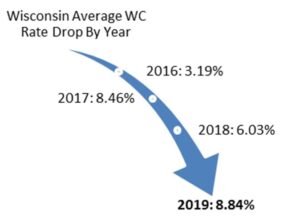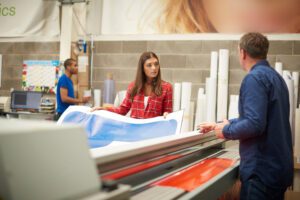Lloyd’s Traces Its Roots to a London Coffee House—What Were These London Coffee Houses?

Last week’s post, The Lloyd’s Insurance Marketplace, pointed out that Lloyd’s is not an insurance company. The post noted that Lloyd’s traces its roots to a London coffee house owned by Edward Lloyd.
Wikipedia references an introduction to Lloyd’s Coffee House as follows:
Lloyd’s Coffee House was a significant meeting place in London in the 17th and 18th centuries.
It was opened by Edward Lloyd…in 1686. The establishment was a popular place for sailors, merchants and shipowners, and Lloyd catered to them by providing reliable shipping news. The shipping industry community frequented the place to discuss maritime insurance, shipbroking and foreign trade. The dealings that took place led to the establishment of the insurance market Lloyd’s of London, Lloyd’s Register and several related shipping and insurance businesses.
The coffee shop relocated to Lombard Street in December 1691. Lloyd had a pulpit installed in the new premises, from which maritime auction prices and shipping news were announced. Candle auctions were held in the establishment, with lots frequently involving ships and shipping. From 1696–1697 Lloyd also experimented with publishing a newspaper, Lloyd’s News, reporting on shipping schedules and insurance agreements reached in the coffee house. In 1713, the year of Edward Lloyd’s death, he modified his will to assign the lease of the coffee house to his head waiter, William Newton, who then married one of Lloyd’s daughters, Handy. Newton died the following year and Handy subsequently married Samuel Sheppard. She died in 1720 and Sheppard died in 1727, leaving the coffee house to his sister Elizabeth and her husband, Thomas Jemson. Jemson founded the Lloyd’s List newspaper in 1734, similar to the previous Lloyd’s News. Merchants continued to discuss insurance matters there until 1774, when the participating members of the insurance arrangement formed a committee and moved to the Royal Exchange on Cornhill as the Society of Lloyd’s. (citations omitted)
Coffee shops today are not like the London Coffee Houses in the 17th and 18th centuries. Unlike today, customers did not frequent the establishments simply to obtain the fine taste of coffee:
London’s coffee craze began in 1652 when Pasqua Rosée, the Greek servant of a coffee-loving British Levant merchant, opened London’s first coffeehouse (or rather, coffee shack) against the stone wall of St Michael’s churchyard in a labyrinth of alleys off Cornhill. Coffee was a smash hit; within a couple of years, Pasqua was selling over 600 dishes of coffee a day to the horror of the local tavern keepers. For anyone who’s ever tried seventeenth-century style coffee, this can come as something of a shock — unless, that is, you like your brew ‘black as hell, strong as death, sweet as love’, as an old Turkish proverb recommends, and shot through with grit.
… One early sampler likened it to a ‘syrup of soot and the essence of old shoes’ while others were reminded of oil, ink, soot, mud, damp and shit. Nonetheless, people loved how the ‘bitter Mohammedan gruel’, as The London Spy described it in 1701, kindled conversations, fired debates, sparked ideas and, as Pasqua himself pointed out in his handbill The Virtue of the Coffee Drink (1652), made one ‘fit for business’ — his stall was a stone’s throw from that great entrepôt of international commerce, the Royal Exchange.1
In coffee shops today, most patrons are completely separated from others. Many are having Internet discussions with those in far-away places. This is entirely different from the benefit and operation of London Coffee Houses:
[E]arly coffeehouses all followed the same blueprint, maximising the interaction between customers and forging a creative, convivial environment. They emerged as smoky candlelit forums for commercial transactions, spirited debate, and the exchange of information, ideas, and lies. This small body-colour drawing shows an anonymous (and so, it’s safe to assume, fairly typical) coffeehouse from around 1700.
…customers sat around long communal tables strewn with every type of media imaginable listening in to each other’s conversations, interjecting whenever they pleased, and reflecting upon the newspapers. Talking to strangers, an alien concept in most coffee shops today, was actively encouraged. Dudley Ryder, a young law student from Hackney and shameless social climber, kept a diary in 1715-16, in which he routinely recalled marching into a coffeehouse, sitting down next to a stranger, and discussing the latest news. Private boxes and booths did begin to appear from the late 1740s but before that it was nigh-on impossible to hold a genuinely private conversation in a coffeehouse….
Today, such social sharing can be found virtually. This blog is an example. But, long before the Internet, the coffee house played an important role in helping shape political and commercial society:
[T]he coffeehouse’s formula of maximised sociability, critical judgement, and relative sobriety proved a catalyst for creativity and innovation. Coffeehouses encouraged political debate, which paved the way for the expansion of the electorate in the 19th century. The City coffeehouses spawned capitalist innovations that shaped the modern world.
For those interested in the topic of coffee houses, I suggest watching an intriguing TED video by Dr. Matthew Green:
Thought For The Day
The ability to deal with people is as purchasable a commodity as sugar or coffee and I will pay more for that ability than for any other under the sun.
—John D. Rockefeller
____________________________________
1 The Lost World of the London Coffeehouse, available at https://publicdomainreview.org/essay/the-lost-world-of-the-london-coffeehouse



